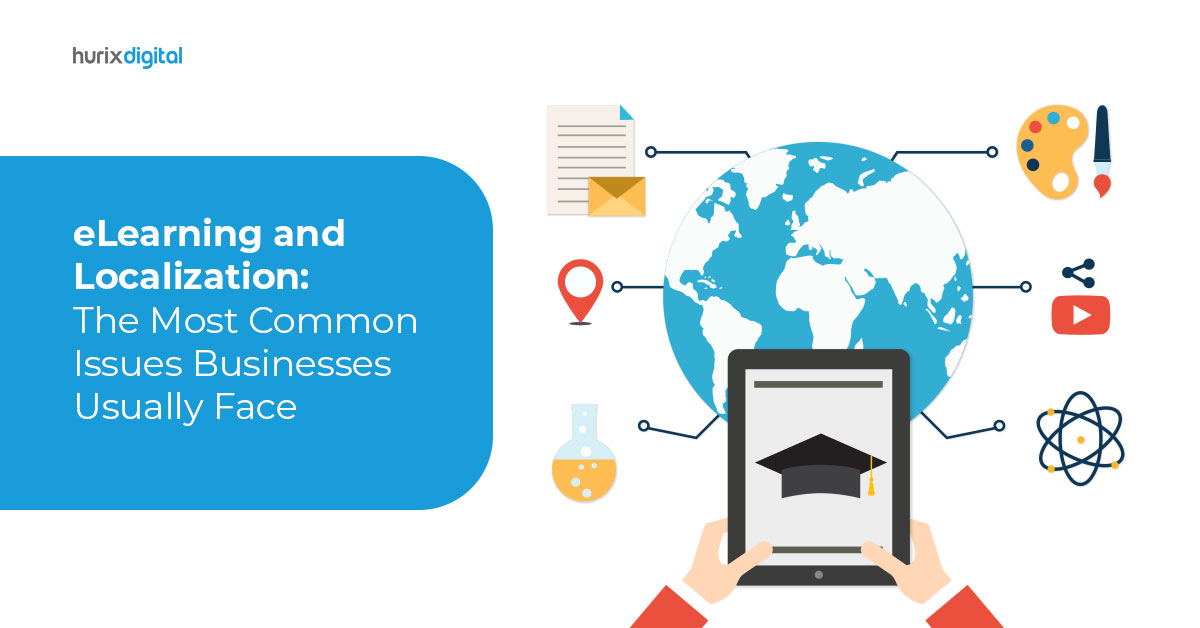
eLearning and Localization: The Most Common Issues Businesses Usually Face
Summary
Learn about the common issues businesses face with eLearning localization, including challenges related to translation, cultural adaptation, and quality assurance.
The modern era is the era of eLearning! Organizations and educational institutions across the globe are utilizing eLearning modules in one way or another, and eLearning localization has become more crucial than ever before.
eLearning offers multiple benefits to the organization and the learners over traditional learning. Around 60% of online learners stated that their eLearning helped them develop critical thinking and problem-solving skills.
The global eLearning market is ever-growing; it is projected to reach $840.11 billion in 2030 from $197.0 billion in 2020.
To get the best out of the rapidly expanding eLearning market, companies must ensure effective localization of eLearning modules so that they can target non-English speaking populations as well.
Table of Contents:
- What is eLearning Localization?
- Common eLearning Localization Challenges
- Overcoming eLearning Localization Challenges
- Closing Thoughts
What Is eLearning Localization?
eLearning localization is the process of translating and adapting online training content and courses for learners speaking different languages and hailing from different cultures. English is the most popular language for web content, and around 59% of websites are in this language.
However, there are around 7,500 languages spoken across the globe, out of which six are official languages of the United Nations. Adapting courses and eLearning modules that are available only in English to other languages through an eLearning localization process can help more people access them.
Localization is more than a simple translation. It involves a nuanced approach that goes beyond simply translating words from one language into another. It includes written content, audio and video, graphics, music, imagery, idioms and sayings, currencies, etc.
There are eLearning localization services available for effectively localizing eLearning content and corporate training localization. Localizing your online content ensures that it is culturally appropriate and valuable for a wider target audience.
Also Read: 7 Factors to Consider for Large-Scale eLearning Content Localization
Common eLearning Localization Challenges
eLearning localization providers face a few common challenges when it comes to the effective localization of online content.
1. Lack of Knowledge About the Target Audience
Localization of content is more than simply translating words, and thus there is a chance of missing out on taking into account certain cultural norms that may impact the localization.
That is why working only with the best localization services providers is so important to ensure effective eLearning localization.
2. Lack of Familiarity with the Subject Matter
Localization service providers may face issues translating different content niches from English to other languages, as adapting online material into other languages is difficult.
Understanding different concepts from the perspective of different cultures is the basis of effective eLearning localization. This problem may be more pronounced if a company employs freelance translators for the job.
3. Adapting Graphics to Different Audiences
A major challenge eLearning localization providers often face is adapting graphics to different target audiences. Different cultures may decipher certain images in different ways. It is important to remember cultural norms while localizing graphics and images in eLearning content.
Different cultures also assign different symbolic significances to different colors. These cultural differences should be kept in mind while localizing content.
4. Adapting Idioms and Phrases
Idioms and phrases are often figurative and not meant to be understood in a literal sense. They have a symbolic, non-literal meaning attached to them.
The literal translation of idioms from one language to another can distort its symbolic relevance to the context. eLearning localization services providers must be aware of the source language idioms and phrases and the probable equivalents in the target language.
5. Finding the Right Tonality
Conveying the right tone in eLearning localization is a serious issue that requires attention. In languages such as English, it is easy to write in a conversational style.
However, this might not be possible in many other languages like Arabic or German. The tonality aspect needs to be taken into account while localizing online courses from English to other languages.
6. Formatting Currencies and Symbols
Not all course materials are entirely composed of words. Symbols for currencies, date formats, and graphic content also need to be localized along with the words.
Different cultures interpret symbols differently and may use different formats for dates and times. Only the best eLearning localization providers could effectively format symbols and currencies from one language to another.
Also Read: Choosing the Right Translation Technology for Efficient Localization
Overcoming eLearning Localization Challenges
While it is true that eLearning localization comes with several practical challenges, there are a few steps every organization and educational institution can take to overcome these issues efficiently. One can start planning their eLearning localization strategy at the early stages of online course development to make localizing the content easier.
Planning will help organizations minimize the impact of the challenges and prepare themselves to face them as and when they arise during the localization process. A few challenges, such as ambiguity in the usage of idioms and symbols, can even be eliminated with proper planning.
Course developers can leave extra space within original designs to allow for text expansion when the original content is in English. Creating pre-optimized content for eLearning localization makes the actual localization process easier later on.
While developing online course content, educational institutions can choose to work with localization services companies to ensure that their courses are pre-optimized. Agencies with expertise in eLearning localization can support organizations through the entire process of creating online training and educational modules.
Understanding eLearning localization challenges for multi-cultural audiences and working on overcoming them is of great importance for any company that wishes to localize its learning modules for diverse groups of learners.
Closing Thoughts
The significance of eLearning localization in the contemporary world cannot be overemphasized. Educational institutions and corporate training providers are going global at an unprecedented rate. This makes it crucial to effectively localize eLearning and training modules for varied English-speaking and non-English-speaking groups worldwide, hailing from different countries and cultures.
Effective eLearning localization is more than just translating; it is a highly nuanced process. That is why you need to work with expert localization services companies for the best outcome.
Team up with the eLearning industry leader of over two decades, Hurix Digital, for the most efficient implementation of eLearning localization in your online training programs. Get in touch with our experts today to discuss your eLearning localization needs and design a compelling strategy.

Performance, Results, Growth, and Life-Long Learning define my professional life. I am passionate about making workplace learning planful, purposeful, and impactful. I take pride in partnering with clients and bringing them the best in learning design and creating solutions that address business challenges.







